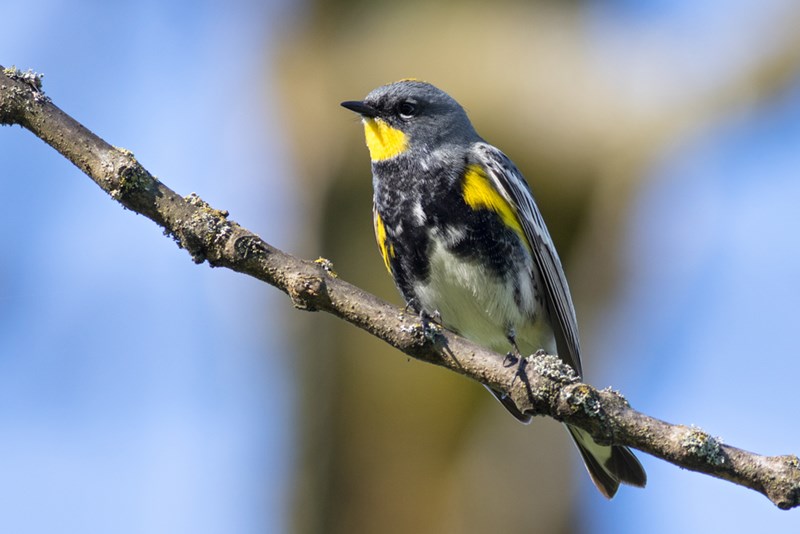Vancouver is playing host to two significant bird events this summer — the 27th International Ornithological Congress, which takes place every four years and attracts ornithologists (bird scientists) from around the world, and the inaugural Vancouver International Bird Festival.
Each week leading up to the festival and congress Aug. 19-26, we’ll highlight a different bird. British Columbia is home to 573 species of birds and many can be found in and around Vancouver.
Bird of the Week
Yellow-rumped Warbler
Species Name
Setophaga coronata
Appearance
Length: 12-15 centimetres
Wingspan: 19-24 centimetres
Weight: 10-18 grams
A small, slender passerine with long, pointed wings and a long, forked tail.
Breeding males are blue-grey above and white below. They have black streaking on the back and breast and the wings are dark with white wing bars. The bill, eyes and legs are black. The breeding male has bright yellow on the crown, flanks and rump. The Audubon’s warbler has a yellow throat, while the myrtle warbler has a white throat, white eye stripe and a black mask. Goldman’s warbler is black instead of grey. Females are similar in markings but more brown then grey or black.
Habitat/Behaviour
The yellow-rumped warbler nests in stands of aspen, birch or willow trees within mature mixed or deciduous woodlands. In North America they winter among semi-open woods, in parks, along creeks and in residential areas. Birds that winter in the tropics inhabit mangroves, coffee plantations and coniferous forests. They are the most abundant neotropical migrants in North America and have the most widespread winter range of any warbler species in the world.
Typical insect fare include ants, beetles, gnats, caddisflies, craneflies, aphids, caterpillars and spiders. When insects are unavailable, they will eat fruit including wax-myrtle berries, juniper berries, dogwood, poison ivy and grapes.
Breeding
Yellow-rumped warblers are monogamous, build cup-shaped nests in trees and lay four to five eggs.
More about birds:
- Get the Vancouver bird checklist online or on your iPhone
- 10 simple birding tips
- Check out more on the 27th International Ornithological Congress and all the events planned for the inaugural Vancouver International Bird Festival
Source: Vancouver International Bird Festival



